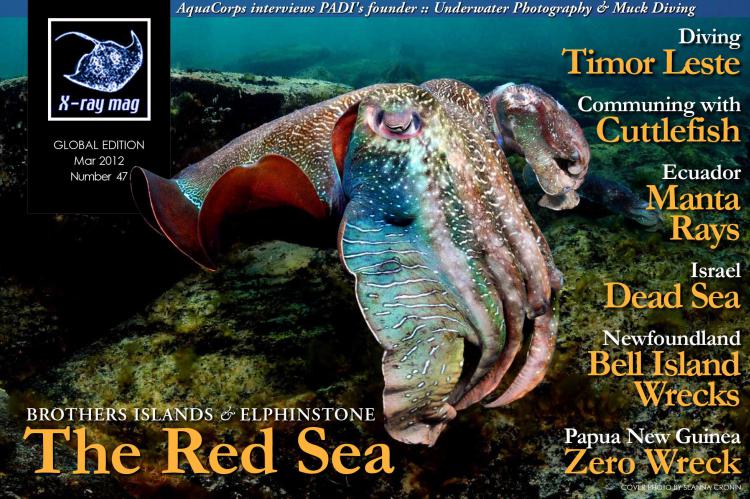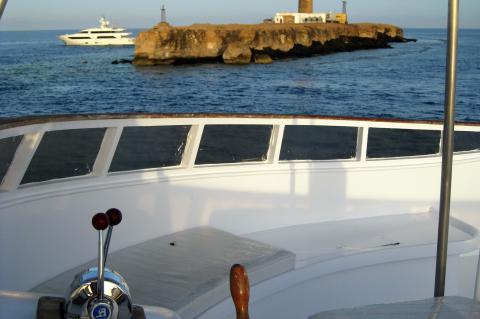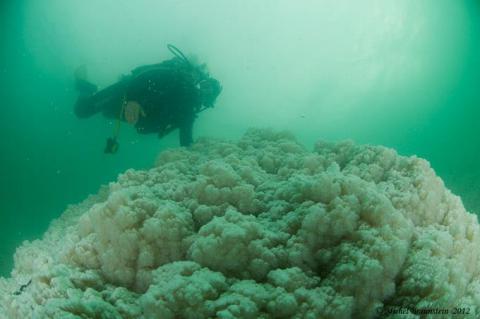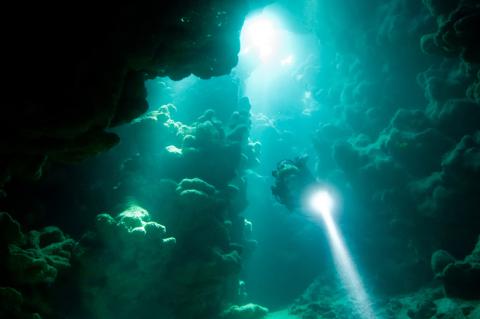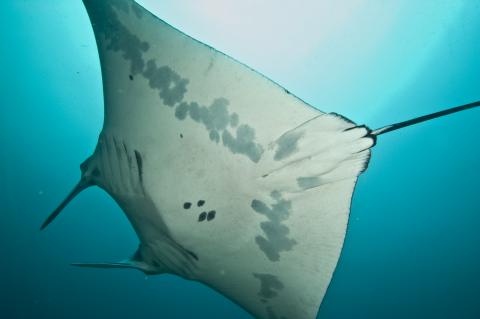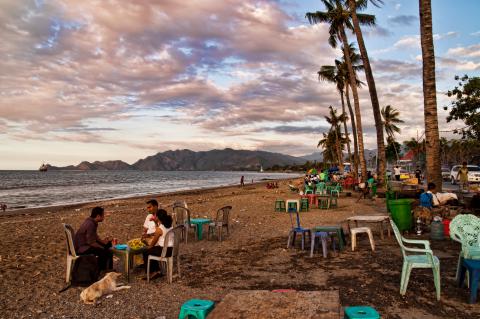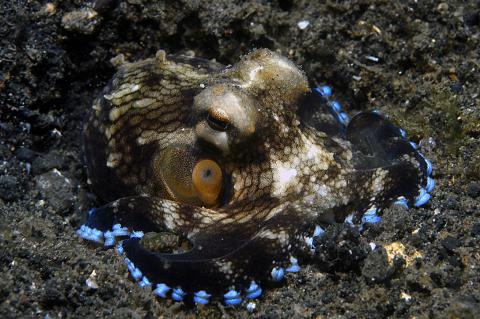X-Ray Mag #47
Red Sea travel special: Brothers Islands, Cairo to El Quseir, Elphinstone; Interview with Archim Schlöffel; Communing with cuttlefish; Kimbe Bay’s Zero Wreck; Bell Island wrecks; Hooded nudibranchs; Giant manta rays of Ecuador; Diving Timor Leste; How to photograph sharks with Andy Murch; Interview with PADI co-founder, John Cronin; Muck diving photography with Lawson Wood; The Dead Sea; Plus news and discoveries, equipment and training news, books and media, underwater photo and video equipment, turtle news, shark tales, whale tales and much more...
..
Main features in this issue include:
Achim Schloffel
The founder of Innerspace Explorers (ISE), Achim Schloffel, talks to X-RAY MAG about diving across the English Channel, explorations and running a dive training agency.
X-RAY MAG: You have announced that you are going to cross the English Channel underwater. What is the status on that project?
Bell Island Wrecks
Just knowing that Vikings started a settlement here a thousand years ago and that the first fishermen from Europe began arriving in the 1500’s adds to a sense of history that cloaks the Canadian province of Newfoundland and Labrador. It’s a sense that I’m acutely aware of on this sunny day in June on board the vessel, Ocean Quest, as the skipper, Bill Flaherty, navigates across Conception Bay towards Bell Island.
The incident began on 4 September 1942. On a moonless night, U-513 crept into the convoy anchorage in Conception Bay. How it got in is reminiscent of a plot from an old Hollywood war movie. U-513 tucked itself under the stern of the SS Evelyn B and followed her into the anchorage.
Brothers Islands: Red Sea Liveaboard
Forty-two miles off the Egyptian coast, the Brothers Islands rise up from the floor of the Red Sea 800 metres below, forming two small, flat tabletops surrounded by steeply sloping fringing reefs.
After six years of almost only diving from RIBs and spreading my clothes around my house, villa or hotel room, I decided it was time to see if I would enjoy a week on a boat with a bunch of strangers.
Diving the Dead Sea
Having dived in plenty of spots around the world, I am always on the lookout for an unusual destination with unusual dives. It goes without saying that diving in the Dead Sea is not commonly found on the list of classic dives, and that’s what attracted me to it. The inland sea is located 425 meters below sea level. It is the deepest place on Earth.
You need 40 to 50kgs (80 to 100lbs) of lead, according to your size. These are divided into weights blocks attached around the waist and the front of the body as well as on the straps of the BCD.
Elphinstone: Grand Canyon of Southern Egypt
It was 6:30 in the morning, and my dive buddy and I were hauling our gear back from the big zodiac speedboat after a thrilling midnight dive on the famous Elphinstone reef in the Red Sea near Marsa Alam, Egypt. While rinsing my gear, Ahmed—the local dive guide—started talking to me because I was diving a back plate, wing and long hose just like him, and he probably felt some kind of connection.
We started talking about technical diving and cave diving, and I showed him some of my photographs on the display of my dripping underwater housing. “So, you like caves, eh?” he asked, obviously unaware about my regular sub-terra activities.
Giant Mantas of Equador
here is a recently developed term making its way into common use amongst the wider dive community, and that term is, citizen scientist. The science community is waking up to the fact that the common man and woman are valuable resources for acquiring many missing pieces in the jigsaw puzzle that is marine research, particularly for migratory species.
Thousands, if not hundreds of thousands, of divers enter the water every day all over our planet. It seems a waste of a valuable resource not to make use of these myriad eyes, and more importantly, cameras to record what is going on when and where.
Land of the Sleeping Crocodile - Timor Leste
The juvenile salt-water crocodile was near to death when the small boy found it stranded in a swamp far from the sea. Although greatly afraid, the boy decided to try and save the crocodile and eventually managed to get it back to the sea where it quickly recovered.
The tale of the boy and his cold-blooded friend is told often in Timor to explain the island’s crocodile-like shape and why the Timorese have a special affinity with the large reptile that is said to inhabit the creeks and pools along much of the south coast of the country.
Muck Diving
Muck diving is now a recognized broad term for (generally) close up photography, usually in terrible visibility and a dark muddy bottom resulting primarily in low light conditions, which may or may not be polluted, too!
Do not let the name, muck diving, fool you; it is one of the best dive photography trips that you can do to obtain quite unique photographs. This form of photography encompasses all of your skills, particularly buoyancy as you will be working close to the seabed, if not on it.


